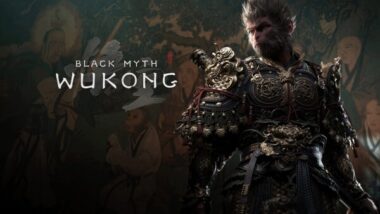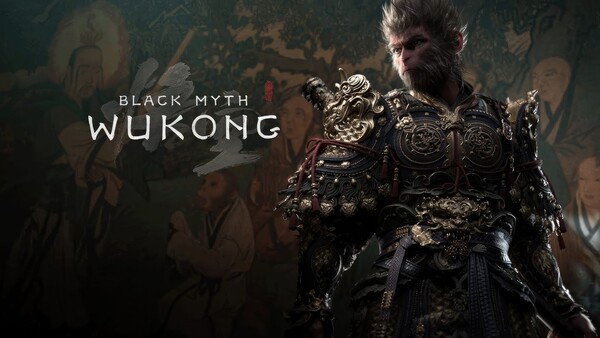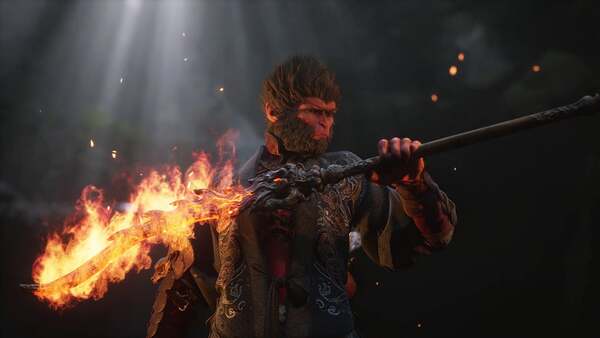In Black Myth: Wukong, the complexity of its enemy AI stands out as one of the game’s most compelling challenges. The AI design in the game isn’t just a backdrop for the player’s actions; it actively shapes the combat experience, forcing players to adapt, think critically, and anticipate enemy moves. This article takes a deep dive into the intricacies of enemy AI in Black Myth: Wukong, exploring how it influences gameplay, increases the difficulty curve, and requires players to develop advanced strategies for success.
The Intelligence of Basic Enemies
The AI of basic enemies in Black Myth: Wukong is more sophisticated than in many other action RPGs, demanding attention to detail and strategic thinking.
1. Predictive Behavior
- Anticipating Player Moves: Basic enemies in the game often exhibit predictive behavior, where they seem to anticipate the player’s next move. This can make straightforward attacks or dodges less effective, as enemies may counteract these moves with surprising accuracy.
- Adaptive Combat: As players repeat certain actions, such as a series of light attacks, enemies begin to adapt. They might block more efficiently or start dodging themselves, requiring players to mix up their tactics to stay ahead.
2. Coordinated Attacks
- Group Tactics: Basic enemies often work together, coordinating their attacks in ways that challenge the player. For instance, while one enemy distracts the player with aggressive attacks, another might circle around to strike from behind, forcing players to maintain spatial awareness.
- Role Specialization: Some enemy groups have roles within their ranks, with certain enemies taking on defensive or support functions, such as buffing their allies or healing them during combat.
Advanced Enemy AI: Mini-Bosses
Mini-bosses in Black Myth: Wukong present a more substantial challenge due to their enhanced AI, which often mimics human-like intelligence.
3. Reactive AI
- Reading Player Inputs: Mini-bosses tend to react more dynamically to the player’s inputs. They might dodge just as the player commits to a heavy attack or retaliate with a counter when sensing a pattern in the player’s actions.
- Punishing Mistakes: These AI enemies are designed to exploit mistakes. For example, if a player misses a parry or dodges too early, the mini-boss will capitalize on the mistake with a swift and punishing response.
4. Dynamic Strategies
- Changing Tactics Mid-Battle: Mini-bosses in the game don’t stick to a single strategy throughout a fight. As their health decreases or they shift into different phases, their tactics change. This could involve switching from aggressive to defensive behavior or unleashing new, more powerful attacks.
- Environmental Awareness: Mini-bosses also use the environment to their advantage, whether it’s by forcing the player into a corner or using obstacles to block the player’s escape routes.
The Unpredictability of Boss Battles
Bosses in Black Myth: Wukong are where the AI truly shines, offering a level of unpredictability and challenge that keeps players on their toes.
5. Complex Attack Patterns
- Multiple Phases: Most bosses have multiple phases that trigger at different health thresholds. Each phase introduces new attack patterns and behaviors, making the battle feel like a series of evolving challenges rather than a static encounter.
- Feints and Traps: Bosses often use feints—attacks that appear threatening but are designed to bait the player into dodging prematurely. Following the feint, the boss might unleash a true attack that targets the player’s new position.
6. Psychological Warfare
- Intimidation Tactics: Bosses are designed to be intimidating, not just in their size or appearance, but in their behavior. They might delay an attack to increase tension or perform sudden, unpredictable movements to throw off the player’s timing.
- Mind Games: Some bosses will fake vulnerabilities or leave themselves open to attacks only to punish players who fall for these traps. This forces players to remain vigilant and question whether an opportunity is truly safe to exploit.
AI Learning and Adaptation
One of the most fascinating aspects of Black Myth: Wukong‘s AI is its apparent ability to “learn” from the player’s behavior over time.
7. Behavioral Tracking
- Memory of Player Actions: The game’s AI seems to track and remember the player’s frequent actions. If a player repeatedly uses the same attack or dodge pattern, the AI might start to predict and counter these moves more effectively in future encounters.
- Evolving Difficulty: As the player progresses, the AI doesn’t just increase in difficulty through higher stats or more health; it becomes smarter, adapting its behavior based on how the player has been playing.
8. Customization of Challenges
- Dynamic Difficulty Adjustment: Some aspects of the game’s AI might subtly adjust the challenge based on the player’s success rate. For instance, if the player is struggling, the AI might briefly reduce its aggression or make its patterns slightly more predictable, helping the player learn without making the game feel unfair.
- Personalized AI Responses: The AI’s adaptation creates a personalized experience, where no two playthroughs are exactly alike. The game might respond differently depending on the player’s preferred combat style, ensuring that each encounter feels unique.
Balancing the Challenge
While the AI in Black Myth: Wukong is challenging, it’s also carefully balanced to ensure that the game remains fair and engaging.
9. The Role of Stamina and Cooldowns
- Managing Player Resources: The AI is aware of the player’s stamina and cooldowns, often pressuring the player when they are most vulnerable. However, this is balanced by giving players enough tools to manage these resources effectively, ensuring that the challenge is tough but not insurmountable.
- Fair Play: Despite its intelligence, the AI is designed to play by the same rules as the player. Enemies have their own stamina limits and cooldowns, and they can be staggered or interrupted just like the player, creating a balanced combat experience.
10. Rewarding Skill
- Skill-Based Outcomes: The AI rewards players who demonstrate skill, whether it’s through perfectly timed parries, well-executed combos, or smart use of the environment. The game’s difficulty scales with the player’s ability, providing a rewarding experience for those willing to master its systems.
- Encouraging Growth: By presenting a consistent challenge, the AI encourages players to grow and improve. Each defeat is a learning opportunity, and overcoming tough enemies provides a sense of accomplishment that is deeply satisfying.
Conclusion
The enemy AI in Black Myth: Wukong is a marvel of game design, offering a challenge that is both intelligent and fair. From the basic enemies that adapt to the player’s actions to the mini-bosses and bosses that test the player’s skills in new ways, the AI in this game is a constant presence that shapes the player’s experience. It forces players to think critically, adapt their strategies, and continually improve, making Black Myth: Wukong a game that is as rewarding as it is challenging.





